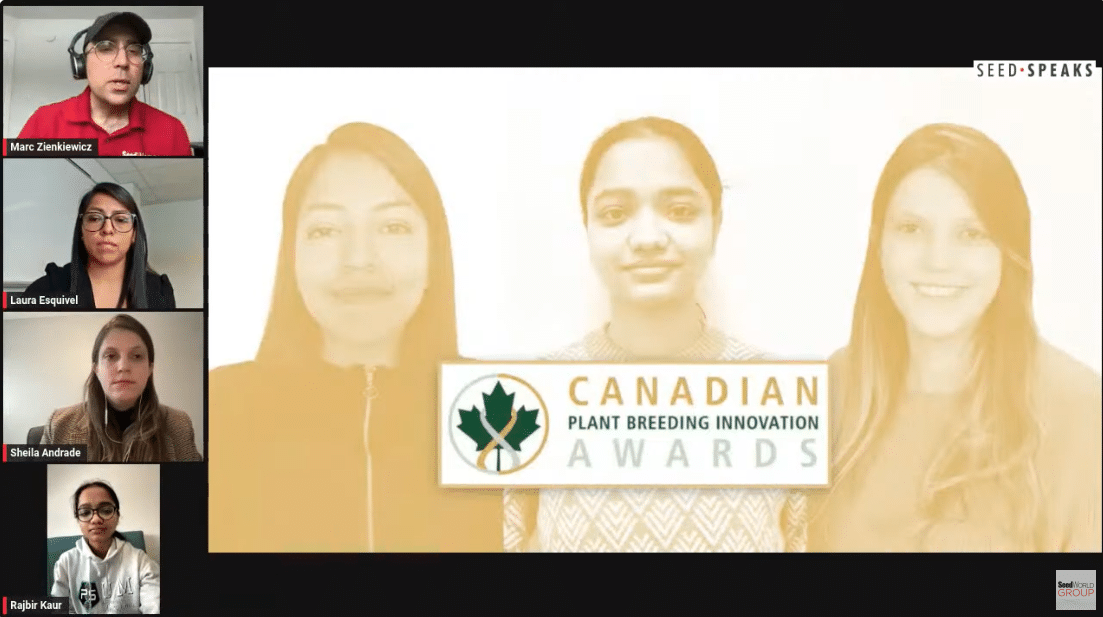The Collaboration for Plant Pathogen Strain Identification (CPPSI) aims to regulate naming plant pathogen strains and races.
Consistent naming of plant pathogen strains and races is a recognized need in the vegetable seed industry. Until very recently there has been no recognized global body that regulates the naming of plant pathogen strains.
In 2007, a U.S. based effort was initiated by the International Seed Federation (ISF) in partnership with the American Phytopathological Society (APS) to address this issue with a focus on disease systems for which claims of disease resistance are made by the seed industry. In 2013, the effort took the name of the Collaboration for Plant Pathogen Strain Identification (CPPSI).
CPPSI is a science based, vegetable seed industry initiative developed to standardize the identification of plant pathogen strains and races. Each pathogen’s identification is based on a set of host differentials, each containing a source of disease resistance and reference plant pathogen strains, collectively referred to as Reference Materials.
Since early 2015, CPPSI has been based at the U C Davis Seed Biotechnology Center. A three-year commitment of funding from seven seed industry founding sponsors, Bayer Crop Science, Enza Zaden, HM.Clause, Monsanto, Rijk Zwaan, Sakata and Syngenta Seeds, provided the initial support for this initiative. These same sponsoring members continue to support the CPPSI initiative. In 2017, CPPSI was awarded a California Department of Food and Ag Specialty Crop Block Grant. These funds will facilitate the continued growth of this initiative.
Addressing an Ongoing Problem

“For example, claims of resistance to melon and tomato Fusarium wilt in the U.S. might be made against strains 1, 2 and 3, but in Europe, claims against these same strains are made as 0, I and 2. Because we have followed different strain naming guidelines, vegetable seed catalogues in the U.S. and Europe must list claims made in both regions. CPPSI is collaborating with associations and organizations in Europe to bring uniformity and consistency to the naming of plant pathogen strains in disease systems as new differentiating hosts are developed,” Himmel says.
Without a variety registration system in the U.S. there has not been as much attention paid to consistent naming of pathogen strains. The same strain could have different names or different strains could be given the same name. These inconsistencies can become a problem for international seed companies wanting to register new varieties in Europe. To register a new variety, a breeder must be able to show the new variety is distinctive, unique and stable (DUS). The resistant and susceptible responses to designated plant pathogens is part of the criteria. The listed claims for resistance may not match up with what the European registration board might expect to find when resistance is identified by strains with different names.
“CPPSI’s effort to standardize plant pathogen strain naming and identification is important to the global seed industry,” says Staci A. Rosenberger, Applied Pathology Lead for North America at Monsanto Vegetable Seeds. “Using a standard reference host-pathogen set serves as a basis for equivalency testing across regions and builds confidence and clarity in disease resistance claims not only for seed companies, registration authorities and academia, but also for seed dealers and growers.”
Rosenberger says another critical function of CPPSI is to serve as a central repository for host differentials and pathogen collections which provide tremendous value when developing new detection methods for plant pathogens.
“Monsanto supports CPPSI’s mission and recognizes the value that this effort brings to our customers,” Rosenberger says.
Hub and Spoke System
CPPSI’s Reference Materials enable pathologists to use a ‘common language’ when identifying new races/strains of a pathogen that has overcome commercially deployed resistance genes. These materials provide a reference for determining pathogen strain virulence.
CPPSI working group members developed a double hub and spokes system for germplasm and pathogen strain storage and distribution. Information and resources from each hub is available to CPPSI members at no additional cost. Nonmembers also have access to CPPSI information and resources as a fee-based service.
The USDA National Plant Germplasm System centers serve as a hub for deposit, storage and distributing of differentiating host sets. A network of public, private and USDA labs serve as the hub for culturing and distributing the reference plant pathogen strains. Linking the two hubs is www.cppsi.org.
CPPSI members are also participating in the ISF Disease Resistance Terminology working group. Members of this group represent the global seed industry and the working group meets regularly to address questions around disease resistance and strain naming. A white paper of guidelines for the naming of new plant pathogen strains is in development. It is based on the criteria for new strain naming developed by the International Bremia Evaluation Board.
CPPSI Membership Focus

Located at the University of California at Davis provides CPPSI a neutral base from which to collaborate with all members of the seed industry equally without any perception of preference of one company over another.
“That neutrality is important to our credibility,” says Himmel. “We recently changed our membership approach from a set fee to an adjustable fee linked to a company’s annual sales revenue to make CPPSI membership more attractive to smaller companies.”
In response to smaller companies that may question the value of CPPSI’s activities for them, Himmel replies: “Access to CPPSI information on disease systems reduces the effort needed to accumulate cultures of verified plant pathogen strains and sources of resistance. Providing these tools for plant pathogen strain evaluation saves time and redundant effort for smaller companies when developing new disease resistance programs and calibrating ongoing programs, why reinvent the wheel?”
“We have the knowledge and information to help companies start up and/or calibrate the virulence in their disease resistance programs,” she says
CPPSI is in the process of developing an emerging diseases website that pools information about new pathogen strains and plant diseases into one location. The database will contain a searchable collection of information by crop and by pathogen. The site will be available to CPPSI members only and will also feature a forum for interaction and the exchange of information.
CPPSI is beginning to gather pathogen resistance information for row crops where diseases take a smaller bite out of yield than in vegetable crops. Generally, a great yield is not dependent on the appearance of the crop, but a few exceptions exist for some diseases in cotton and soy. In contrast, appearance is everything in vegetables because misshapen fruits, leaves, stalks and tubers are not marketable.










